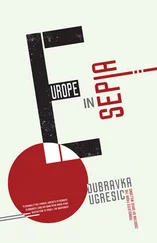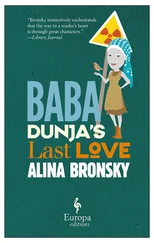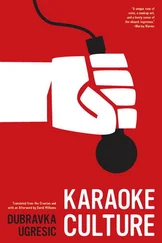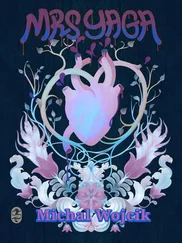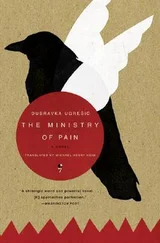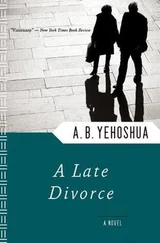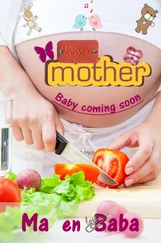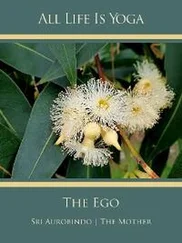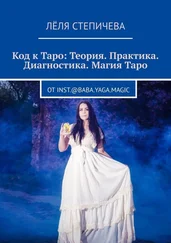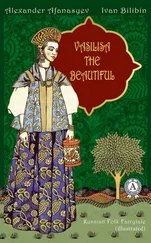Baba Yaga’s cannibalism, from a folkloristic point of view, is linked to a ritual with a frightful name: ‘baking the child properly’ ( perepekanie rebenka ). This ritual was performed on children suffering from rickets (the folk name for which, in Russia and Ukraine, was ‘dog’s old age’: sobachya starost ’). [31] In Ukraine, for example, a witch-doctor would bring water from three wells early in the morning, mix the dough, bake bread in the oven, take it out and then pretend to push the sick child into the oven instead. Meanwhile the child’s mother had to go around the room three times, stopping each time in front of the window to shout: ‘Old woman, what are you doing?’ The witch-doctor would call back: ‘I’m kneading the dough!’
The actual witchcraft consists of ‘burning’ the sickness. This ritual was accompanied with chanting a spell: ‘Just as we bake the bread, so, dog’s old age, you’ll bake too!’ ( Kak hleb pechetsja, tak i sobachja starost pekis! ) During the ritual, led by the village witch-doctor, they would pretend to push the sick child into the bread oven. In other words, the bread was symbolically identified with the child, and the oven with the mother’s womb. Returning the child to the oven, meaning the womb, signified rebirth. The ailing, rickety child was not ‘fully baked’ in its mother’s womb, so it has to be ‘baked properly’ in the oven. At the same time, the oven symbolises life after death, the provisional descent into it, and provisional death.
In most fairytales, Baba Yaga appears as an old woman living by herself. Sometimes she turns up as a mother with a single daughter, and sometimes as a mother with forty-one daughters. From a psychoanalytic point of view, of course, the most interesting thing is the motif of devouring her own daughter. Baba Yaga (like the Greek Thyestes, who is tricked by his brother Atreus into eating his own sons) gobbles up her own daughter by mistake, or even accidentally kills all her forty-one daughters. [32] 21 ‘Chuviliha ran to the hut, ate and drank her fill, then she went outside. She rolled on the ground, and said: “I’m rolling around because I ate Teryoshka’s flesh.” High in an oak tree, Teryoshka shouted down: “Roll, witch, it is your own daughter’s flesh that you ate.”’ (From Vassilisa the Beautiful )
The South Slavs hold that a witch can only injure her own family and friends. ‘We cannot do any harm to those who are hateful to us, but those who are dear to us, or our own kin, they have no escape,’ says the Baba in The Mountain Wreath . There is even a South Slavic saying: ‘Where else will a witch go but to her own kin?’ In a Serbian folksong, a shepherd describes his dream like this:
Witches devoured me:
my mother plucked out my heart,
while my aunt held a torch to light her work.
The people on some Croatian islands believe that ‘witches like best to pluck out the hearts of their own kin, a bit less to pluck out their friends’ hearts, and if a witch is not satisfied with her husband, she plucks out his heart as soon as she can.’ In Herzegovina and Montenegro, they believe that witches only eat children that are ‘dear and kindred to them, even if they are not their own’(!). The common folk suppose that a woman cannot become a witch until she eats her own child. In Konavle, they think a witch ‘has no strength at all until she kills her own child’. And the Montenegrins think that ‘a woman who wants to be a witch must eat up her own child first, only then can she eat other children too.’ (T. R. Ðorđević)
Slavs think that what witches like best is drinking the blood of children and others with sweet blood. A witch ‘sups the blood with a little spoon and very soon the child withers and dies’. It is believed that witches sometimes kill older people too: ‘they drink a young boy’s or girl’s heart dry, and whosoever they drink up, is no more: they fade away and die in the flower of their youth.’
Blood is very rarely found on Baba Yaga’s menu. There is a rare motif in a Siberian fairytale, of Baba Yaga drinking blood from the breast of Princess Marfita. The principal hero cuts off Baba Yaga’s head, but the head uses Marfita’s legs to run away.
* * *
It can happen that human fingers are found floating in Baba Yaga’s soup, but her basic diet is ordinary enough. What is not ordinary is Baba Yaga’s phenomenal appetite. [33] ‘Vassilisa lights the kindling in the skulls along the fence-posts, goes to the stove and takes out the food and sets it before Baba Yaga, and there is enough for ten. She fetches kvass, honey, beer and wine from the cellar. The old woman eats it all up, drinks everything to the last drop, and leaves Vassilisa only a little broth, a breadcrust and a morsel of pork.’ (From Vassilisa the Beautiful )
The scale of Baba Yaga’s cannibalism is modest by comparison with ordinary witches, or with the Maenads, the Bacchae, who in their trance rend the flesh of living creatures with their bare teeth, and once (according to Euripides) led by Agave, mother of Pentheus, tore Pentheus himself to pieces.
Remarks
Allow me to draw your attention to the camouflaged details in your author’s fiction which could be linked with Baba Yaga. In the first part, the author’s mother barely allows her daughter to have access to her space. The mother identifies herself with her house, or more precisely she is the house, and she experiences her daughter’s presence, like the things that she brings into the house, as a territorial violation. Although it is trivial at first glance, the incident with the little cupboard has a symbolic value: the cupboard becomes acceptable to the mother precisely when it has been painted, when it has undergone this transformation, when it is symbolically ‘chewed up’ and ‘devoured’. Although these relationships are only hinted at, Pupa and Beba have traumatic relations with their own children, something which can easily be explained as symbolic cannibalism. In one place, Beba admits that she is her own son’s ‘killer’.
Baba Yaga’s family status is contradictory. She is a woman without a husband – a spinster. In the Czech version, Ježibaba has a husband, Ježibabel, and his mere name says everything about the power relations between that couple. It is Baba Yaga’s status as mother that causes the most confusion: sometimes a daughter, Marinushka, is mentioned, and occasionally the number of daughters grows to forty-one. Sometimes Baba Yaga appears as a mother of dragons. In one fairytale, tricked into gobbling salt and flour, Baba Yaga drinks seawater to slake her thirst, until she bursts and gives violent birth to frogs, mice, snakes, worms and spiders. Some tales mention Baba Yaga’s sisters (they are identical except in age; they are even called Baba Yaga). ‘Blue-eye’, Sineglazka , a young warrior woman from Russian fairytales, is Baba Yaga’s niece. Even so, the predominant version has Baba Yaga as an old woman who lives alone.
Baba Yaga represents the dark side of motherhood. She appears as the wicked stepmother, the fateful midwife and false mother (in one tale, she even mimics the voice of the hero’s mother in order to lure him closer and gobble him up). Motifs of perversity crop up here and there, though rarely; in one place, she sucks the young heroine’s breasts, in another she asks her to sing her a lullaby and rock her to sleep. Baba Yaga is surrounded by (potential) symbols of female sexuality: her oven is a womb, the hut on hen’s legs is a woman’s belly, Baba Yaga’s mortar also symbolises her womb, though at the same time it could be her mother, Baba Yagishna’s womb. Baba Yaga sometimes chatters away to her mortar and calls it her little mortar-mother ( stupushka-matushka ).
Читать дальше

